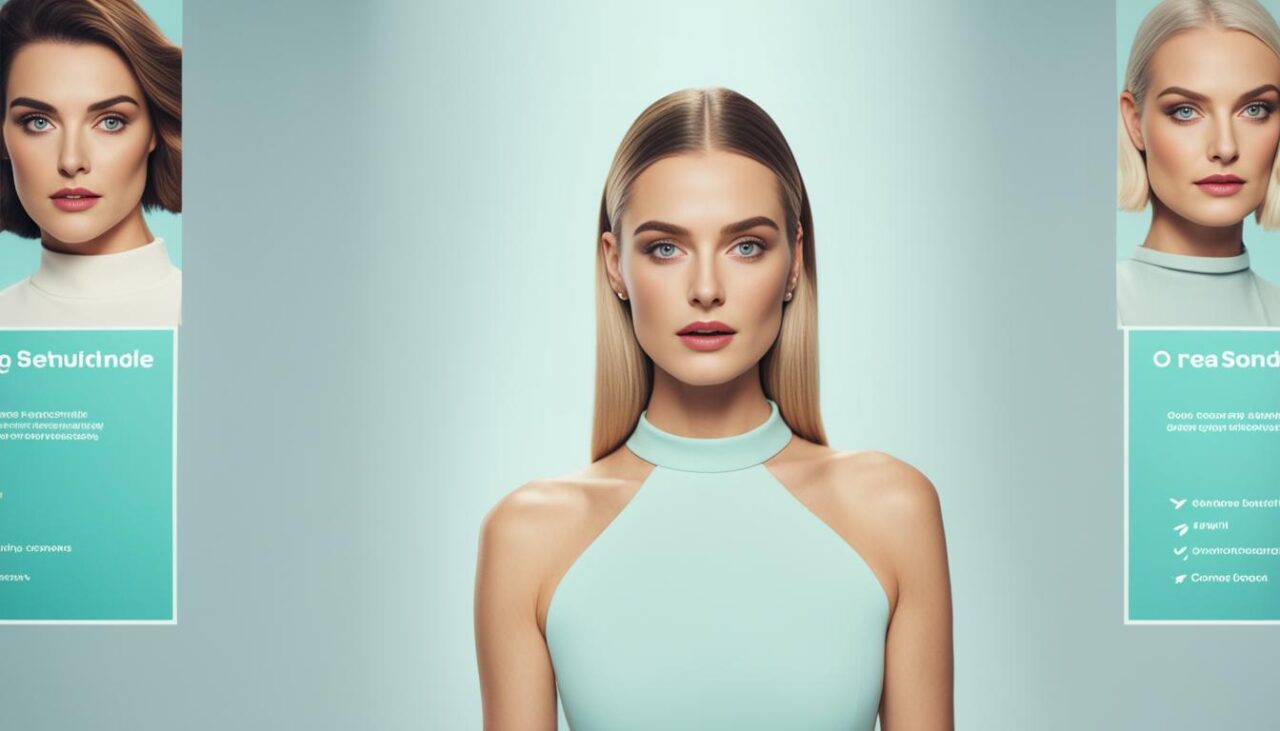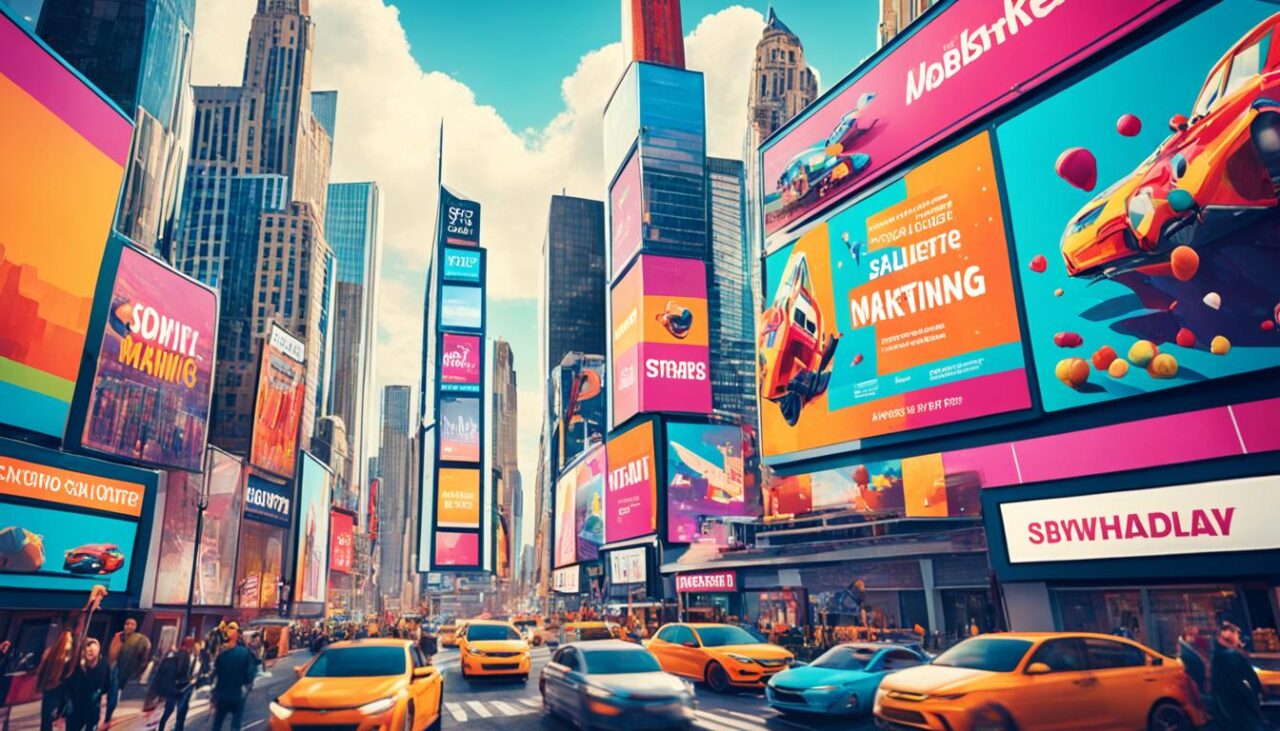The landscape of advertising is in a constant state of flux, evolving with the changing tides of societal norms and commercial pressures. Central to this transformation is the concept of beauty, an ever-shifting ideal that possesses the power to define brand identity, sway consumer perception, and leave an indelible advertising impact upon the world. In this fluid environment, brands that excel in visual storytelling emerge as leaders, for they speak to the heart of consumer experiences, marrying aesthetics with authenticity to forge powerful connections.
Today, the definition of beauty in advertising extends beyond the superficial, embracing a myriad of forms, colors, and sizes. It's a reflection of a world growing in diversity and an audience increasingly critical of traditional norms. Brands now face the challenge and the opportunity to redefine their aesthetics to not only capture attention but to resonate with the values of their consumers, ultimately influencing the purchasing behaviors borne out of these consumer perceptions.
Key Takeaways
- The interplay between evolving beauty standards and advertising impact.
- Visual storytelling as a vital tool for reinforcing brand identity.
- Evolving consumer perception requires brands to adapt and be innovative with their messaging.
- The powerful role of aesthetics in consumer behavior and brand loyalty.
- How inclusive beauty norms are redefining the expectations for modern advertising.
- The necessity for authenticity in brand representation.
- The importance of staying attuned to the shifting paradigms within the beauty and advertising industry.
The Evolution of Aesthetic Standards in Advertising
Advertising has long been a mirror, reflecting the ideals and aspirations of society while simultaneously molding them. Over the years, the concept of beauty and the representation of brand aesthetics in advertising have undergone significant transformations. These shifts are not merely changes in style or preferences but are indicative of deeper societal movements and consumer behavior adjustments, often driven by burgeoning marketing strategies and technological advancements.
Historical Perspectives on Beauty in Marketing
Tracing back through historical advertising, we observe a pattern of defined aesthetic values tailored to the zeitgeist of each era. From the voluptuous figures in Renaissance art to the streamlined silhouettes of the Art Deco movement, these paradigms were translated into the marketing materials of the times. Vintage advertisements from the early 20th century frequently emphasized luxury and sophistication, setting the tone for brand aesthetics that conveyed exclusivity and status. These historical standards were often unyielding, with beauty ideals serving as a reflection of societal norms and expectations.
Current Trends Influencing Brand Aesthetics
In stark contrast, contemporary brand aesthetics are increasingly fluid, reflecting a dynamic and diverse consumer base. Companies are reshaping their marketing strategies to embrace a broader definition of beauty, one that transcends traditional limitations. Concepts like minimalism, authenticity, and relatability have eclipsed the once-common unreachable ideals. In addition, sustainability and ethical production have become significant themes, as consumers show a growing preference for brands aligning with their values, thus impacting purchasing decisions on a global scale.
The Role of Social Media in Shifting Aesthetics
Social media has played a pivotal role in this shift, granting consumers a voice and a platform to challenge the status quo of beauty in advertising. User-generated content and influencer partnerships have led to a more eclectic and inclusive portrayal of brand aesthetics. The democratization of aesthetics through platforms like Instagram and TikTok has empowered brands to engage in dialogues with consumers, understanding their behavior, and crafting marketing strategies that resonate on a personal level. The power has, to some extent, shifted from advertisers to the audience, catalyzing an era where consumer feedback directly influences the representation of aesthetics in ads.
The ongoing evolution in brand aesthetics is not simply a change in the visual elements of advertisements but a reflection of a changing world – one that values diversity, inclusivity, and authenticity.
Understanding Advertising Impact on Consumer Behavior
The realm of advertising extends far beyond the mere display of products; it intricately weaves concepts of style, beauty, and appeal into the fabric of society, subsequently influencing consumer psychology at its core. A deeper dig into this entanglement unravels the nuanced ways in which advertising strategies modify not only the market's landscape but also the very purchasing decisions of individuals. In essence, these strategic cues, when decoded, reveal the potent marketing influence on consumer purchase patterns.

Leveraging aesthetic standards in advertising has become a sophisticated tool for marketers, aimed at triggering an array of emotional responses. The captivating allure of a well-crafted ad can elicit feelings of desire, belonging, or satisfaction—emotional triggers that are meticulously mapped out to drive sales. These reactions, although appearing spontaneous to the consumer, are the results of meticulously crafted marketing campaigns that understand and leverage the principles of consumer psychology.
“The goal of effective advertising lies not just in presenting a product but in embedding it within the lifestyles and aspirations of consumers, thereby shaping their purchasing decisions in a seemingly organic manner.”
Marketing influence extends its reach through various channels, with every billboard, commercial, and social media advert sculpting the tastes and preferences of society. Thus, grasping these concepts becomes essential for brands aiming to resonate with their audiences, curate their content, and ultimately, secure their position as preferred choices among myriad options. In conclusion, understanding the scaffold of consumer behavior upon which advertising rests, offers the key to unlocking a brand's potential for making an indelible impact on the market.
Incorporating Visual Storytelling in Modern Marketing Strategies
Today's marketing paradigms are increasingly reliant on the synergy between compelling brand narratives and innovative visual communication. As we navigate through an era teeming with digital content, distinguishing a brand's presence through visual narrative is key to creating lasting impressions and emotional connections with audiences. The essence of story-driven content lies at the intersection of creativity and strategy, requiring marketers to sculpt campaigns with emotional branding that resonate on a personal level.

The Power of Narrative in Brand Imaging
Brand narrative is not merely about chronicling the history of a company; it's an ongoing conversation that shapes the company's journey in the minds of the consumer. Employing a robust narrative as part of a campaign strategy allows businesses to weave a tapestry of tales that embody their ethos, culture, and vision. It's these narratives that humanize brands, foster loyalty, and ultimately drive the consumer's decision-making process.
Crafting Campaigns with Emotional Resonance
Emotional branding is at the core of customer loyalty and advocacy. Combining evocative imagery with a message that tugs at the heartstrings, marketers engineer campaigns that move beyond conventional promotion to form a heartfelt connection. The power of this approach is magnified when the right tones, color schemes, and visual elements coalesce to speak directly to the viewer's emotions, cementing a brand in their psyche.
Case Studies: Successful Visual Storytelling Examples
Real-world cases of visual storytelling highlight its effectiveness in market strategy. Take for instance, campaigns from global powerhouses like Nike or Coca-Cola; these brands consistently deploy narratives that transcend product advertising, instead celebrating human triumph and communal experience.
The use of iconic visuals, meshed with poignant narration, sets the stage for these brands' messages to not just be seen, but felt. It underpins the concept that visual communications paired with emotional branding can elevate a brand's narrative to iconic status.
Branding and the Aesthetics of Inclusivity
The paradigm of inclusive marketing is not just a trend but a transformative movement reshaping the realm of diversity branding. As the social tapestry evolves, so does the demand for representative advertising that mirrors the rich mosaic of global audiences. This sweeping shift underscores a significant aspect; inclusivity is not merely a box-checking exercise but a fundamental element of contemporary brand strategy. An authentic commitment to inclusivity can elevate a brand's relevance and forge deeper connections with consumers.
Today's consumers expect more than superficial narratives. They yearn for stories that reflect their realities, celebrating diversity in race, gender, age, ability, and beyond. Brands like Dove and Fenty Beauty have made substantial strides, implementing advertising campaigns that champion a broad spectrum of beauty, validating the idea that meaningful representation equates to commercial success. This intersection of ethics and economics is where forward-thinking brands are recalibrating their approach to tap into the sensibilities of an enlightened customer base.
By embedding diversity into their brand DNA, companies are sending a powerful message of acknowledgment and respect towards consumer individuality, fostering brand loyalty that transcends mere transactional relationships.
Amid the conversation around inclusive marketing, the question arises: How can brands embody this ethos authentically? It begins with the understanding that diversity branding is not an end, but a journey that involves continuous learning, listening, and adapting. Implementing robust strategies that reflect real-world diversity requires thorough research and genuine partnership with diverse communities. It is a delicate balance between representing varied experiences and avoiding stereotypical portrayals that could lead to backlash and brand damage.
In conclusion, the embrace of representative advertising is an acknowledgement of the world's diversity and the unique stories each individual holds. Brands that successfully navigate the aesthetics of inclusivity will not only stay relevant but will thrive, forging stronger customer connections through a shared vision of a more inclusive world.
Conclusion
As we canvas the landscape of advertising, it becomes evident that the aesthetic benchmarks are not set in stone but are in continuous flux, responding to the ebb and flow of cultural and social evolution. The advertising domain stands on the brink of possibly the most pivotal shift in recent history, with an ever-growing emphasis on inclusivity and authentic representation. The future trends in advertising are likely to underscore this dynamism, challenging brands to remain at the forefront of evolving beauty standards while simultaneously committing to authenticity in their messaging.
Analyzing The Future of Aesthetic Standards in Advertising
In contemplating future trends in advertising, we anticipate a surge in campaigns that break past conventional beauty paradigms, further altering how attractiveness is portrayed and perceived. The advertising impact on consumer perception has historically been monumental, and as standards continue to evolve, there is an untapped potential for brands to pioneer new realms of aesthetic ideologies. These evolving beauty standards, heralded by a more critical and discerning audience, demand a reshaping of visual storytelling that honors diversity and promotes a broader spectrum of beauty ideals.
How Brands Can Adapt to Ongoing Changes in Beauty Ideals
To successfully navigate these changes, a brand's capacity for adapting marketing strategies will be paramount. An agile approach, coupled with a deep understanding of the market's pulse and consumer inclinations, will serve as a compass guiding brands through this transformative era. The ability to resonate with consumers on a meaningful level—where the brand story harmoniously intersects with evolving beauty standards—will differentiate the front-runners from the followers in the competitive tableau of marketing. In essence, brands that embrace and foster this metamorphosis through their campaigns will likely not only see increased affinity from their audience but will also pave the way for the next chapters of advertising's ongoing narrative saga.







